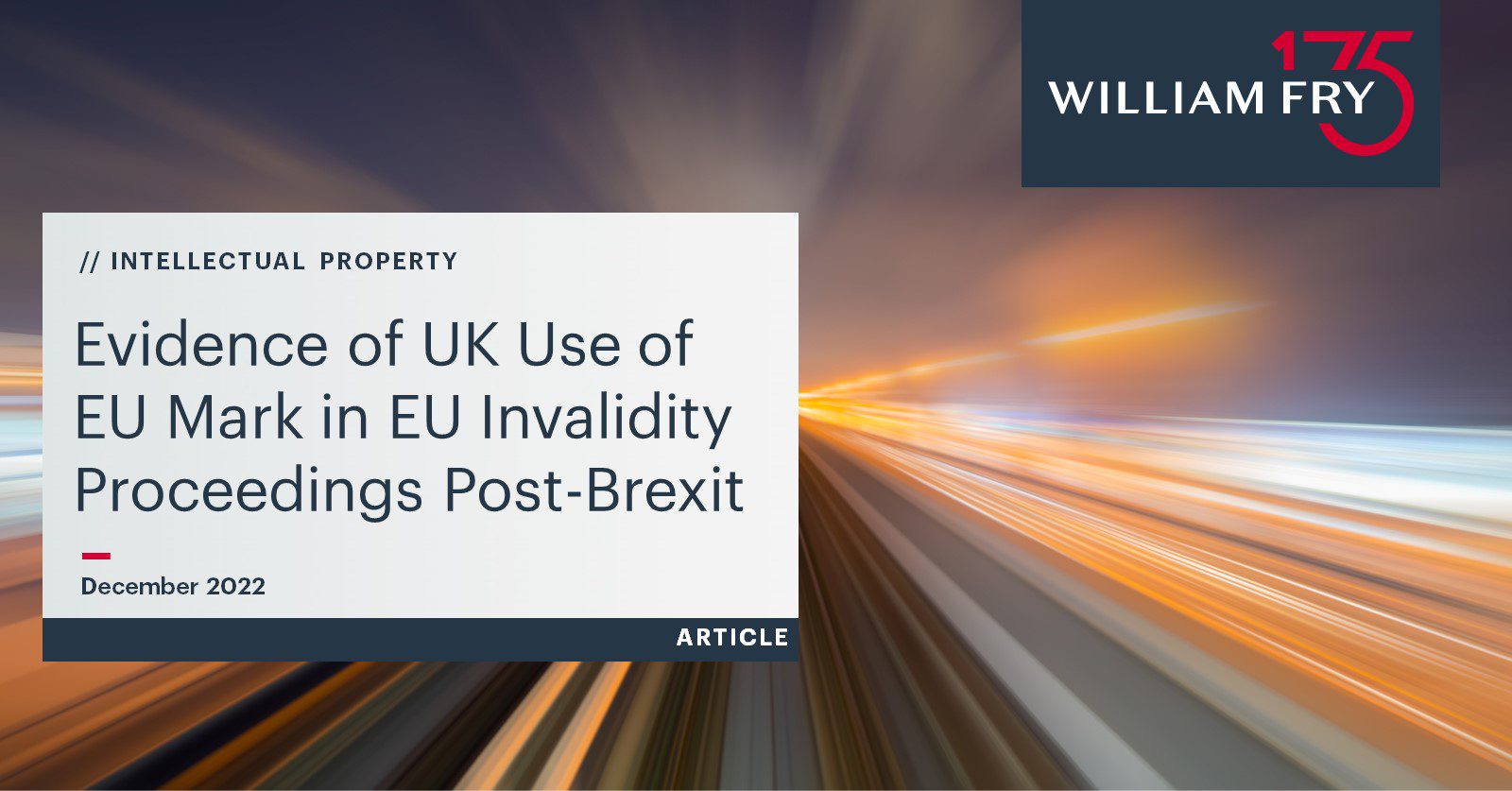As Christmas swiftly approaches, we send you a subliminal reminder to do that last-minute shopping by sharing an interesting decision of the General Court (GC) of the CJEU in Shopify Inc. v EUIPO (T-222/21).
In this case, the GC rejected the UK evidence of use of an earlier EU trade mark, despite the evidence of use of this earlier trade mark and the filing date of the contested mark (a later mark) predating Brexit.
Background to these proceedings
In May 2017, Shoppi Limited and two individuals (Shoppi) filed an EUTM application for a figurative mark containing the word Shoppi, which mark was registered in May 2018 (Later Mark). Canadian e-commerce company Shopify Inc (Shopify) sought a declaration of invalidity against Shoppi’s Later Mark based on Shopify’s earlier EUTM for the word mark “Shopify” (Earlier Mark).
The EUIPO Cancellation Division upheld the application for a declaration of invalidity of the Later Mark, but the Board of Appeal (BOA) allowed Shoppi’s appeal. The BOA found that the marks were visually, phonetically, and conceptually similar “to a low degree”. The BOA held the Earlier Mark had a slightly higher distinctive character (for the non-English speaking public) due to the “ify” suffix and, for the English-speaking public, conveyed the highly allusive message of “to make something become a shop”, such that it had low inherent distinctiveness.
The GC upheld the decision of the BOA, concluding that there was no likelihood of confusion overall. The GC emphasised the Earlier Mark’s “weak distinctive character”, holding that the “shop” element of both marks was merely descriptive. The Later Mark did not have any particular meaning to the public and therefore did not have a distinctive character.
The BOA had found that the evidence submitted to demonstrate the enhanced distinctiveness of the Earlier Mark acquired through use, was not sufficient. The BOA dismissed the evidence of enhanced distinctiveness concerning the UK. The BOA noted that EU Trade Mark legislation no longer applies to the UK from 1 January 2021, unless otherwise provided for in the withdrawal agreement. Shopify claimed that the BOA erred in its assessment of this evidence. It submitted that the relevant date for this assessment was the date on which the application for registration of the Later Mark was filed, when the UK was part of the European Union. Shopify argued that the date for assessing the distinctiveness of the Earlier Mark was the date of application of the Later Mark (i.e. 8 May 2017). However, the GC disagreed with Shopify and held that the BOA was correct to ignore the evidence of use of the Earlier Mark in the UK. The GC held that, in the context of cancellation proceedings, the evidence of enhanced distinctiveness of the Earlier Mark acquired through use must still be capable of being relied on at the date on which EUIPO rules on the application for a declaration of invalidity. In the present case, that date was 18 February 2021; post-Brexit. Therefore, the BOA was obliged not to take into account the use of the Earlier Mark in the UK.
This decision of the GC is in line with previous findings of the EUIPO and communications from the EUIPO on the impact of Brexit. However, it is contrary to earlier decisions of the GC (including in Nowhere v EUIPO – Ye (APE TEES) T-281/21) where the GC has held that the relevant date for identifying the applicable substantive law is the filing date of the contested mark and UK earlier rights acquired prior to Brexit are valid grounds to oppose EU applications. Therefore, under that ruling evidence of use in the UK of an EU mark could be relied upon where the filing date of the contested mark was pre-Brexit (as in this case). A decision from the CJEU on appeal in Nowhere v EUIPO is awaited and will hopefully provide final clarity on this thorny issue.
Contributed by Anna Lee Dowling




